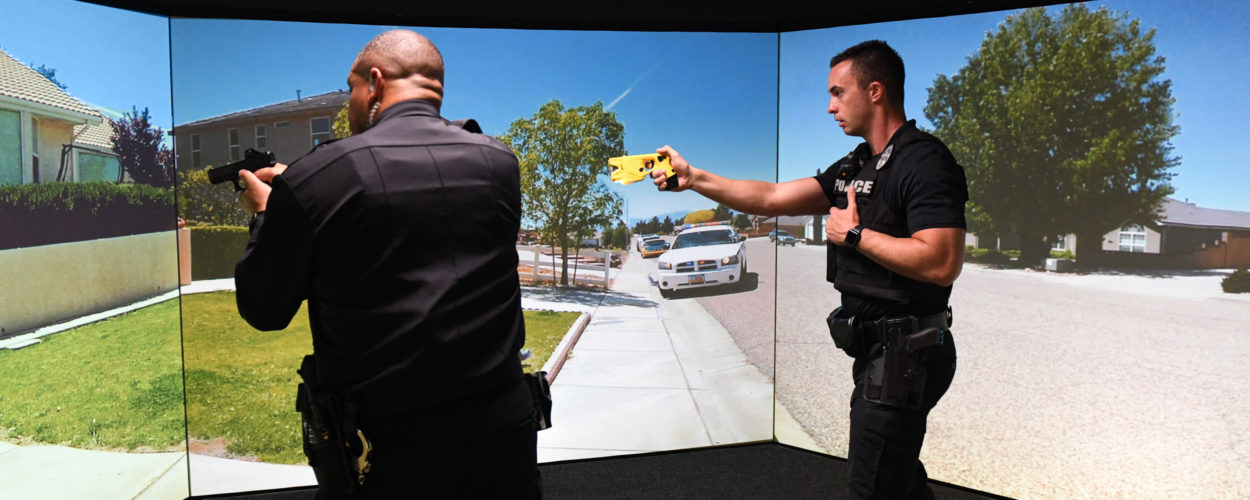
Every law enforcement officer has heard of de-escalation. It is always involved in police training and is what the public expects police to use whenever possible. Although it is not a guaranteed solution, it is something that officers are constantly reminded of and expected to be proficient in.
What is Police De-Escalation?
De-escalation involves diffusing a situation, particularly if a subject(s) is agitated. Sometimes a person or situation may need to be de-escalated as soon as the interaction begins, but there are times where escalation can be prevented altogether. This is referred to as “non-escalation” – taking control of a situation before it escalates.
VirTra has partnered with Vistelar, a company dedicated to conflict management training across the workplace spectrum – from the office to the front lines. This partnership helped form the V-VICTA™ De-Escalation training curriculum, which provides contact professionals with tips and tricks as well as practice within a VirTra simulator.
VirTra’s Re al Life Training Scenarios
A large portion of VirTra’s scenarios can be entirely verbal and based around de-escalation with no need to even reach for a firearm or less-lethal. Sometimes non-escalation is used as well, meaning a subject may appear calm, but the wrong words trigger a violent reaction. This helps law enforcement professionals recognize how to approach a situation for the best outcome.
Vistelar teaches several tactics that contribute to non-escalation. Although no non- or de-escalation techniques are guaranteed to work in every situation, these are designed to help officers show respect when it is deserved.
• Treat with Dignity – Use empathy, listen and anticipate their needs. (Remember: Respect must be earned!)
• Respond, Don’t React – Thoughtfully respond rather than impulsively react; take verbal or physical action only when necessary.
• Showtime Mindset – Align all elements of your communication with the situation at hand.
• Proxemics – Keep in mind your distance between yourself and the person you are interacting with. Be non-threatening and remember to stay back if you feel unsafe.
• Universal Greeting – To let a person know who you are and why you are there, introduce yourself and your affiliation, then give the reason for contact.
• Beyond Active Listening – In the presence of conflict, active listening isn’t enough. Go beyond that by clarifying, reflecting, advocating and other techniques that will allow for better empathy.
It is important to reiterate that these are not foolproof solutions and neither are de-escalation tools. Although it would be wonderful if they worked each time, every situation is unique and may require different strategies. Vistelar’s guidelines and suggestions should assist officers in their communication and empathy skills, therefore leading to a higher chance of successful interaction closures.
For more information on de-escalation and other V-VICTA curriculum, contact a product specialist.
Recently Published
Join Our Newsletter







